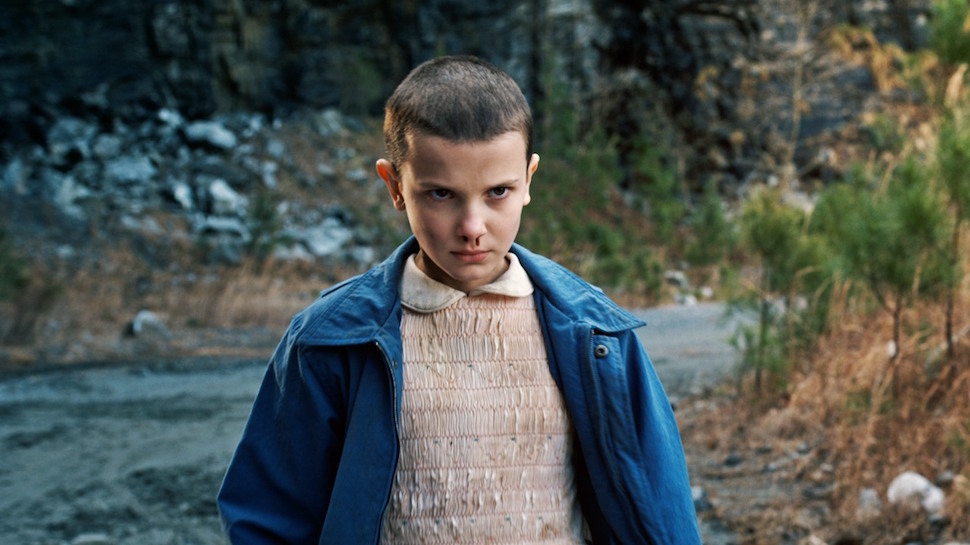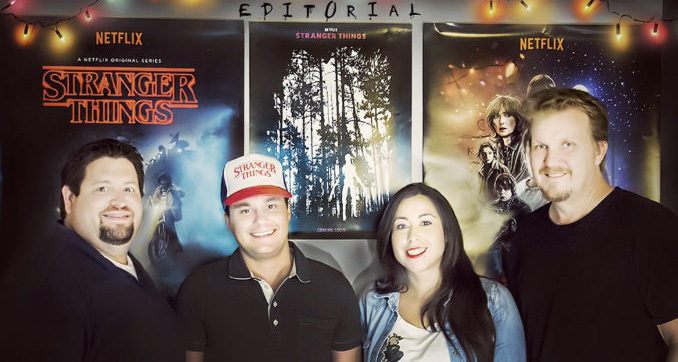
by A.J. Catoline
After picture editor Kevin Ross wrapped editing the huge hit summer show Stranger Things, he left town for a vacation road trip with his family. As Netflix released the entire first season of the eight-part series for viewing on July 15, he was driving through South Dakota on his way to Mount Rushmore, and listening to Sirius XM Radio.
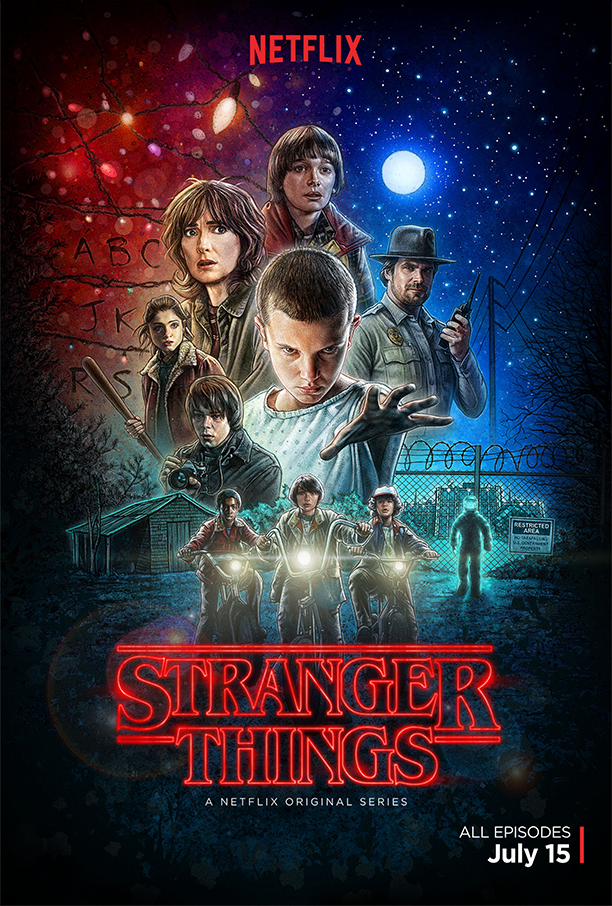
“Everybody was talking about how much they loved the show; I couldn’t believe how well it was being received,” Ross said. Even pop singer Katy Perry said in an interview that Stranger Things was “the best show” she had seen on TV.
Kevin got a call from his fellow series picture editor Dean Zimmerman. “I called Kevin and said, ‘I think we just hit the big time if Katy Perry is talking about it!’”
Ross admitted they both “had no idea the show would become a cultural phenomenon. It was such a reward to think that here is something I have worked on that is reaching a giant audience.”
CineMontage chatted with the editorial team and discovered some interesting strategies they brought into the cutting room — like D&D dice and a lava lamp.
But first we wanted to know about the director-editor relationship on this show, which is a special interaction on any project. On this project there were two creators/writers/directors/executive producers, Matt and Ross Duffer — aka the Duffer Brothers — who also are identical twins. And they mostly work every moment together.
CineMontage: Was it confusing working with two identical twin directors in the same cutting room? Was there any challenge distinguishing between them or their notes?
Dean Zimmerman: I am an identical twin. My brother Danny is also an editor in the industry. The relationship between me and the two Duffer brothers was one of those unexplainable, twin-kinship, synergetic things.
[Stranger things have happened in Hollywood than identical twin directors hiring an editor who is also an identical twin. In fact, Dean is a member of a proud Hollywood editing dynasty. (See “The Zimmermen,” Editors Guild Magazine, July-August 2010). His father Don Zimmerman, ACE, cut The Night at the Museum (2006), and hired his son to work as an additional editor, which is how Dean met director Shawn Levy, who directed two episodes of Stranger Things.]
Our relationship is very organic; the Duffer brothers are both so different, yet the same. It was easy to relate to them as a collaborative team. I may have had a bit of advantage over Kevin only in this respect, but we all worked together as a cohesive editorial team.
Kevin Ross: It may have taken a couple days to remember who was who with the Duffer brothers, but the guys were always in-sync with their notes. They were so confident in their storytelling, they allowed us to experiment with our cuts and really mine the material to the fullest. It was a smooth and fun editorial experience with Matt and Ross.

DZ: When I first read the pilot script to Stranger Things, it definitely resonated with me. It has that nostalgic Spielberg-esque feeling to it. And growing up in the ’80s with Goonies, Stand By Me and E.T., it was immediately relatable to me.
CM: The show is an homage to 1980s-cinema: The girl Eleven pointing to the picture of the missing boy Will is like the scene from Witness [1985], when Lucas Haas points to Danny Glover’s picture; the van flying over the biking kids is reminiscent of the scene from E.T. [1982]; or the kids walking along the train tracks is like Stand by Me [1986]. Did you re-watch these iconic films before you started cutting those scenes?
DZ: When I started watching dailies, I was immediately thrown back into my early teens, thinking how fantastic it was that I was watching what I watched as a kid. And being able to mimic or replicate the incredible editing on these classic ’80s films was super fun. We didn’t know we were doing it, it just kind of happened organically.
KR: Yes the show was a love letter to the ’80s, though they never gave us a directive to specifically edit the show with those films in mind. We were not intentionally mimicking any movie; we approached the material on our own. I cut the scene as I felt it would best be edited. Though you may watch it and say that’s totally the Witness moment, I never intended to match the cutting pattern. Though we have a nice twist: The van flies over the kids on the bikes, not the kids on the bikes who fly as in E.T. Though clearly there are similarities, but we were never told this is the ET moment, this is the Stand by Me moment, etc.
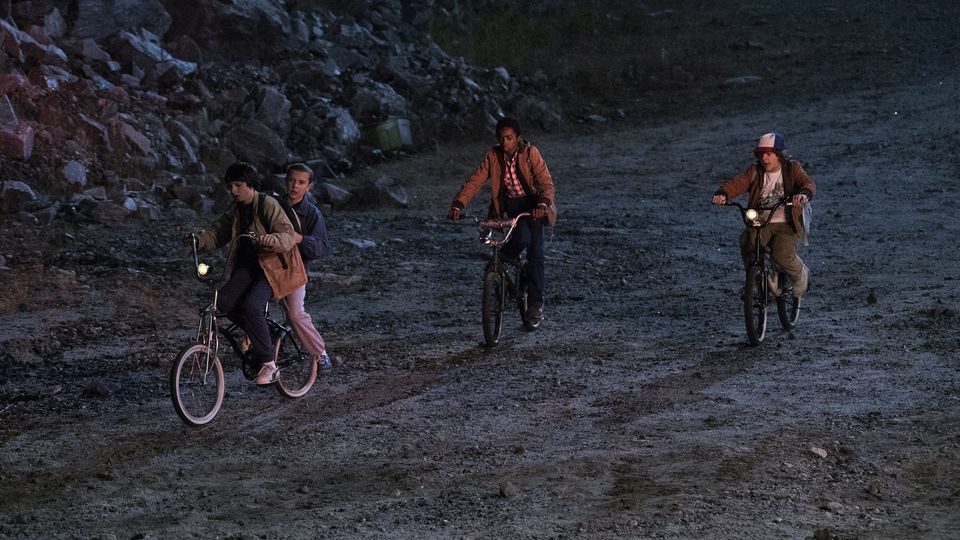
CM: Describe the editorial collaboration, with both executive producers/directors the Duffers and Shawn Levy?
DZ: It was zero-ego and total collaboration. The Duffers allowed Kevin and I to tell the story they put down on paper, and they gave us the freedom to try things and explore. They were so great and so collaborative, it really was a unique experience. The success of the series was due to the fact that they knew what they wanted, yet they were always open to suggestions and the willingness to try something different. I applied this freedom to try jump-cuts, which when used correctly can be powerful. Specifically in Episode Eight, when Chief Jim Hopper is trying to revive Will, we jump cut to Hopper’s memory of his daughter dying and used that to really amp up the tension and drama.
KR: I also had a jump-cut montage in Hopper’s trailer when he was searching for the hidden bug in Episode Five. Not only did the style ramp up the speed of the scene, it perfectly lent itself to the paranoid, disconcerting state of the character.
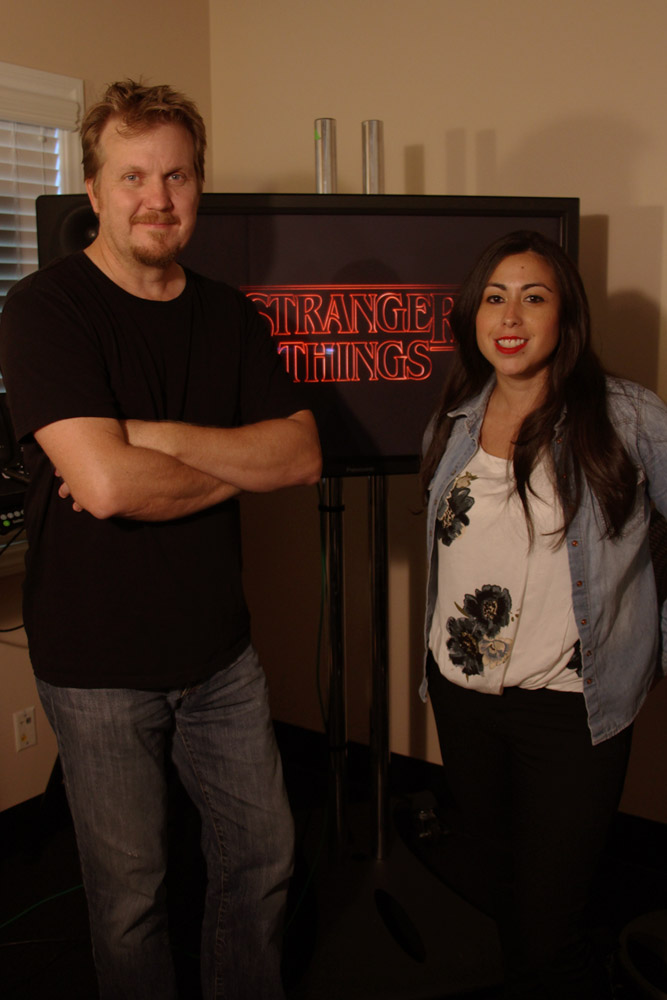
DZ: I had worked with Director Shawn Levy before; I’ve done most of his movies, so I have a huge shorthand with him. So Kevin was able to ask me, “Hey, do you think Shawn will like it if I cut the scene like this?” I was able to say, “Well, Shawn may like it more like this,” or “Yes, he will love that,” or “Maybe try a variety of options to throw at him.” And Shawn was always open for options; he loves thinking outside the box for new ideas.
CM: What was the editing workflow?
DZ: We all looked at the project not as an eight-part series, but rather an eight-hour movie. Like we were each cutting a reel.
KR: The cutting room atmosphere on this show made it one of the best I’ve worked on. We were close like a family, and we all had this bond to make the best thing we could make.
DZ: We had a screening room that we dressed in ’80s style. We re-created the basement of the kid’s house. We had the shag carpet and an Atari video game — hooked up to our 4K flatscreen! But still it was a throwback. We brought in a lava lamp and a Millennium Falcon model, posters of E.T. and The Thing, all the fun stuff from the ’80s. We even hung Christmas lights like in the show. We did have some D&D dice out for the producers/directors to play with.
CM: Was this room like a gateway in the cutting room?
DZ: It certainly added a deeper level to the edit. We immersed ourselves into this Stranger Things world. It got the creative juices flowing really great. We were all just in this little bungalow in Hollywood creating something special, and that has been so warmly received, it was awesome.
KR: And all the credit there goes to our AP, Rand Geiger, and Post Supervisor, Joshua Hegmann, for bringing that room to life!
CM: Assistant editors Nathaniel Fuller and Katheryn Naranjo say the show was in post-production for about seven months; cross-board shooting about three to four hours per day in 6K digital, 40 to 50 hours per episode with mostly two and sometimes three sync cameras. And edited on Avid Media Composer 8.5 at DNx36 resolution. Was there a lot of footage?
DZ: Being a feature guy coming from the world where you have so much coverage and options, it’s always you are racing against a tight production schedule in TV, so there are fewer takes and choices.

CM: The show had many beautiful wide shots and single-camera moves. There were also powerful close-ups on the faces of the kids, like the wide, haunting eyes of Eleven. How do you know when to cut wide vs. close?
KR: The kids on this show were amazing actors. It was never a case of us cutting around to build a performance; they gave us great performance. These kids were professionals and they were great.
DZ: I was able to try things that wouldn’t necessarily work in features. We got to explore and let moments play. It’s like Kevin and I were in a sandbox, with no parental supervision, and we were told to play, destroy things, build things and do whatever we wanted — and I think that translated in the editing. We created some great moments, and the characters feel real and grounded in this unbelievable supernatural situation. There is always a feel that this could happen.
CM: The music in the show was a huge creative element. The 80s soundtrack and the synth-feel of the score. How did the music track get edited?
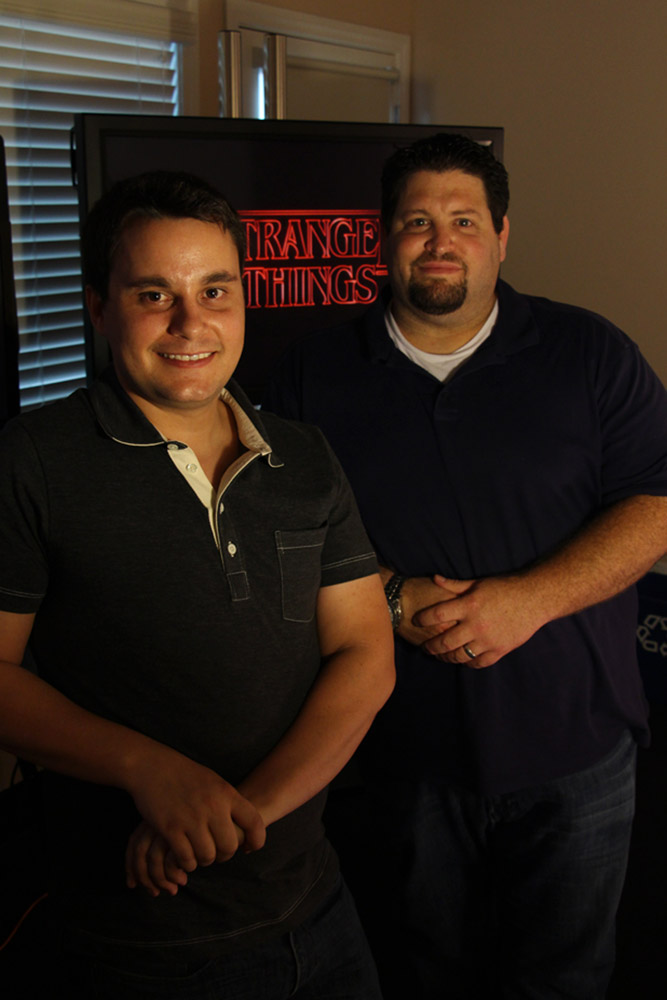
KR: Some of the cues were called for in the script, so the Duffers had a keen sense of how the music would fit into the show. Others were our choices. In Episode Three, we use “Heroes” by David Bowie, covered by Peter Gabriel. This cue was chosen by Shawn, because we were stumped to find a good song for the end of this episode. However Bowie had just passed away and it was going to be difficult to clear any of his music. [The Duffer Brothers persisted in clearing the song.] It really was a testament to the belief in this series that allowed that song to end up in the episode.
DZ: Most of the choices were the Duffer brothers’. They are fantastic at picking music cues, from their own personal library. As for the theme and the rest of the score, from the beginning they hired this techno-electronic band called Survive, which consisted of two guys, Kyle [Dixon] and Mike [Stein], out of Austin, Texas. The Duffers said the whole series would live or die by these guys; they did not want to work with more established composers…they wanted this sound they liked from the band that was totally synth, totally nostalgic ’80s. It was a bold and incredible call, and it worked. And it’s those kind of decisions that the Duffers made, and held onto, that paid off in spades. The way they approached the music, was the same way they approached the entire series — with confidence in their creative vision.
KR: In an early cut of Episode Two, when Nancy and Barb go to Steve’s house party, we originally had AC/DC’s “Highway to Hell” blasting as Steve opened the door. It was a great laugh and everybody loved it, but we didn’t end up clearing it, and instead used Trooper’s “Raise a Little Hell” as a nice alternate.
CM: Speaking of funny smash-cuts — like when Eleven and Mike Wheeler have a moment alone in the bathroom, she moves close to him, and they are almost about to kiss when his fellow nerd friend Dustin barges into the room — was that conceived in the edit?
KR: They shot a great whip-pan move over to Dustin that along with the timing of the sound effect makes that cut work great.
CM: The sound design really brought the supernatural world to life.
KR: There was the real world, the upside-down world [accessed via a unique gateway, where the monster chases the kidnapped Will], and the void, where Eleven goes into the sensory-deprivation tank. And our sound editor Brad North and re-recording mixers Joe Barnett and Adam Jenkins did specific work to make each world sound unique.
DZ: Also, our assistant editors are the unsung heroes. Nat and Kat found so many amazing sounds for us to temp into the cut that just brought the world to life. Without our assistants, we could not have created the magic on screen.
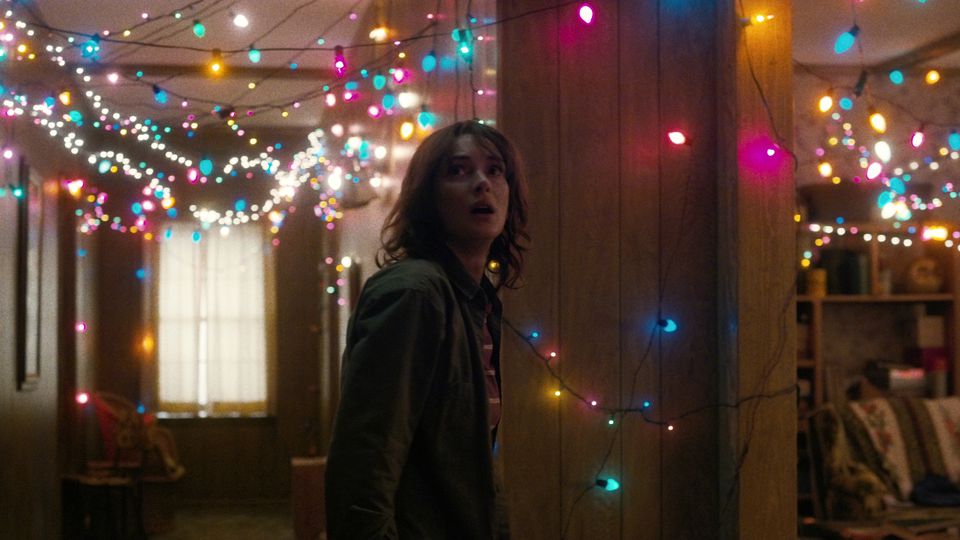
CM: Is it a challenge to edit early on without so many of the visual effects that make the final cut?
KR: Many of the show’s effects were practical, including the monster, the Demogorgon. There were also CGI enhancement shots, and then of course, full blown CGI visual effects. Depending on the scene, we might be cutting the guy in the monster suit or temping with an early pre-viz shot like a hand breaking through a wall.
DZ: Having done lots of visual effects-driven films, I’m very used to cutting with negative space. Having the double on set in the suit was perfect for some effects, not for others. So in the end, it was a hybrid of the visual effects supervisor Marc Kolbe creating new material but working from our practical shots, in terms of erasing the man in the monster suit. It was a harmonious relationship with editorial and visual effects because we had so many more shots than we had anticipated. If it were not such a collaboration from the full post team, we would not have had as many visual effects ready to finish the series on time.
KR: The upside down world was practical sets. That was shot on location in the woods and they dressed the trees with growth, which was added to in visual effects. And the floating spores were added. It’s amazing that those are 3D spores that light up when flashlights hit them. And the Christmas lights alphabet scene was totally practical, I just had to edit the timing of the lights spelling “R-U-N.”
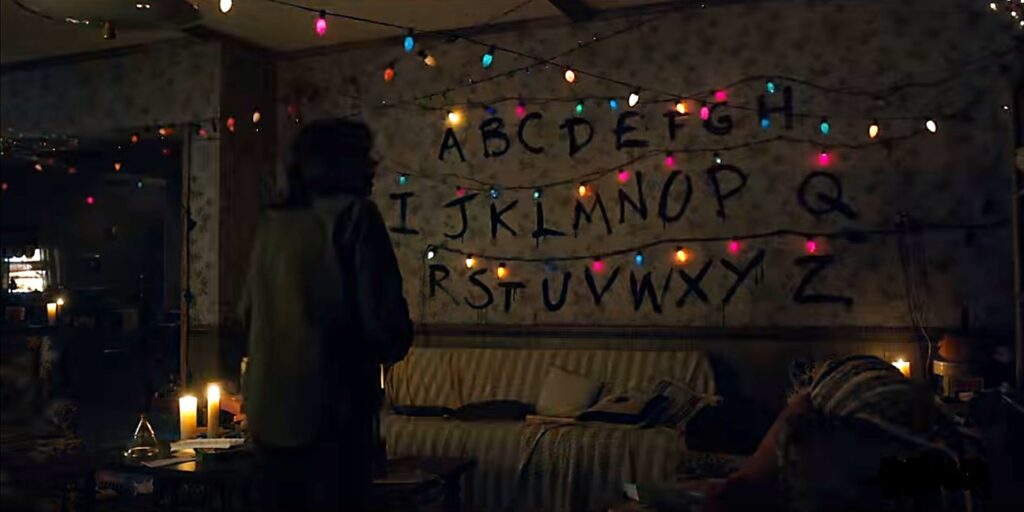
CM: Any word on Season Two?
DZ: I’m looking forward to Season Two. We are just scratching the tip of the iceberg. There’s so many places the story can go.
CM: Do you think Eleven is still alive? Or is Chief Hopper just crazy to leave Eggo-waffles in the woods?
KR: I wouldn’t call Chief Hopper crazy, but I don’t know what will become of El.
DZ: We will know that answer very soon. We haven’t seen the new scripts yet, so I actually don’t know. If I were a betting man, I would say of course El should come back; she was a great actress. Though I was disappointed when the character Benny got killed in the diner scene in Episode One. He’s such an incredible, powerful actor, like in The Knick. It was a shame we couldn’t have more of him in the series. But again, that’s the Duffers. They take chances. So we shall see…it’s up to them.
